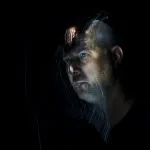HEILANDSKIRCHE SACROW
The Church "Heilandskirche" was built in 1844 directly on the banks of the Havel in the Sacrow district of Potsdam. The Italian style and the free-standing bell tower make this church an exceptional building. The church is surrounded by a large park. Sacrow Castle is also located in the park. In my opinion, the term "castle" is somewhat exaggerated.
Direkt am Ufer der Havel im Potsdamer Ortsteil Sacrow wurde im Jahr 1844 die Heilandskirche errichtet. Durch den italienischen Stil und den freistehenden Glockenturm ist diese Kirche ein außergewöhnliches Bauwerk. Umgeben ist die Kirche von einem großen Park. In diesem steht ebenfalls das Schloss Sacrow. Wobei die Bezeichnung "Schloss" in meinen Augen etwas übertrieben ist.
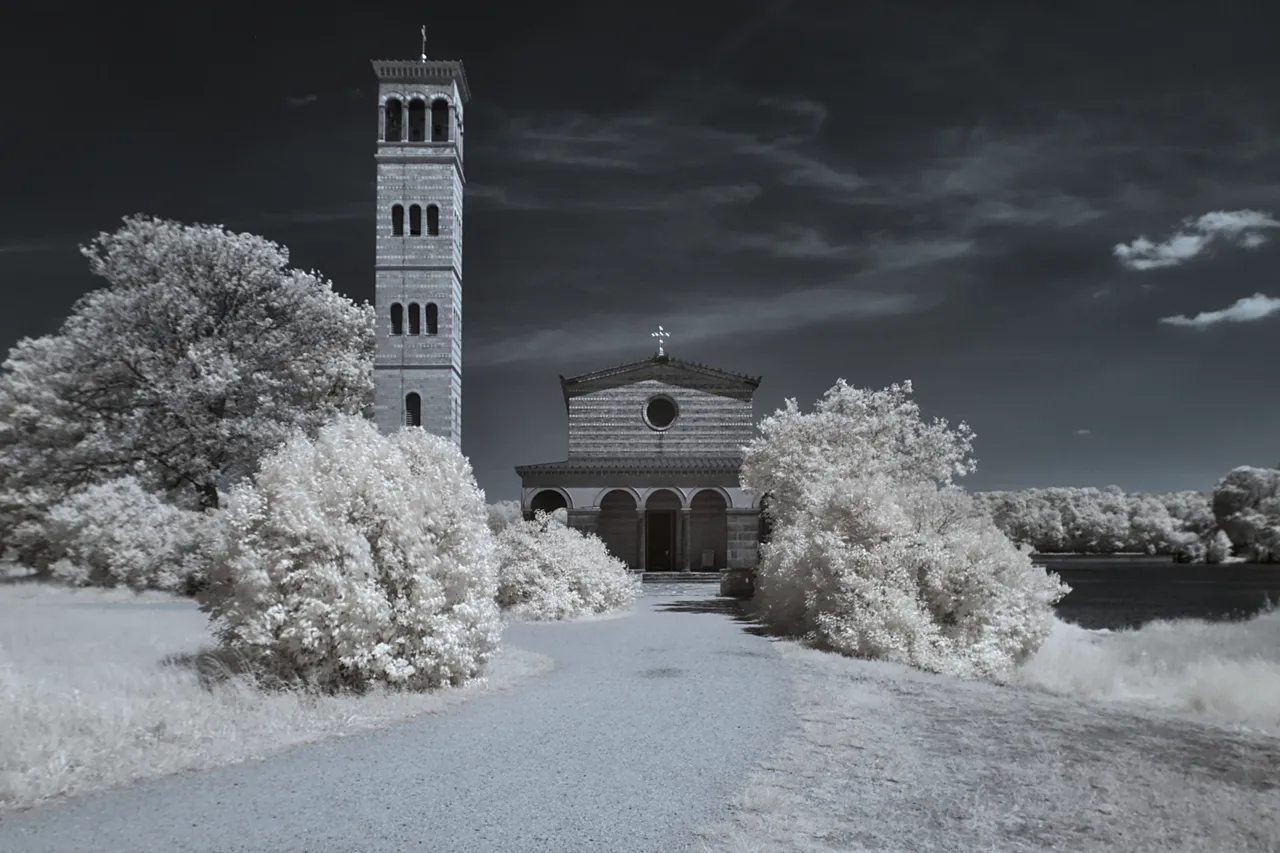
📷 Nikon D300 (full spectrum converted) - Nikkor 17-35/2,8 - f5,6 - ISO 200 - 1/8 second - 720 nm IR pass filter
Until 1989, the church was located in the GDR's border area with West Berlin. For this reason, the church fell more and more into disrepair. On the initiative of the then West Berlin Mayor Weizsäcker, the exterior of the church was restored in 1984/85. The interior of the church remained destroyed until the fall of the Wall in 1989. Large parts of the interior were destroyed by the border troops of the GDR. Between 1993 and 1995, the church was extensively renovated and largely restored to its original condition. Fortunately, documents and old photographs were still available that showed the condition of the church before 1961.
Die Kirche lag bis 1989 im Grenzgebiet der DDR zu West-Berlin. Aus diesem Grund verfiel die Kirche immer mehr. Auf Initiative des damaligen West-Berliner Bürgermeisters Weizsäcker wurde das Äußere der Kirche in den Jahren 1984/85 wiederhergestellt. Das Innere der Kirche blieb bis zum Fall der Mauer im Jahr 1989 zerstört. Große Teile der Inneneinrichtung wurden von den Grenztruppen der DDR zerstört. In den Jahren 1993 bis 1995 wurde die Kirche aufwändig saniert und weitestgehend in den Originalzustand versetzt. Glücklicherweise waren noch Unterlagen und alte Fototgrafien vorhanden, welche den Zustand der Kirche vor 1961 zeigten.

📷 Nikon D300 (full spectrum converted) - Nikkor 17-35/2,8 - f5,6 - ISO 200 - 1/2 second - 720 nm IR pass filter
After a pleasant walk along the Havel in the best weather, I reached the church. Unfortunately, I was not the only one who wanted to visit the church. It took quite a while until no one was walking around in front of my tripod. Since I worked with different cameras and different filters, I had to wait each time for the moment when the scene was without people and bicycles.
Nach einem angenehmen Spaziergang entlang der Havel bei bestem Wetter erreichte ich die Kirche. Leider war ich nicht der Einzige, der die Kirche besichtigen wollte. Es hat eine ganze Weile gedauert bis niemand mehr vor meinem Stativ rumgelaufen ist. Da ich mit verschiedenen Kameras und verschiedenen Filtern gearbeitet habe musste ich jedes Mal wieder auf's Neue auf den Moment warten bis die Szene ohne Menschen und Fahrräder war.
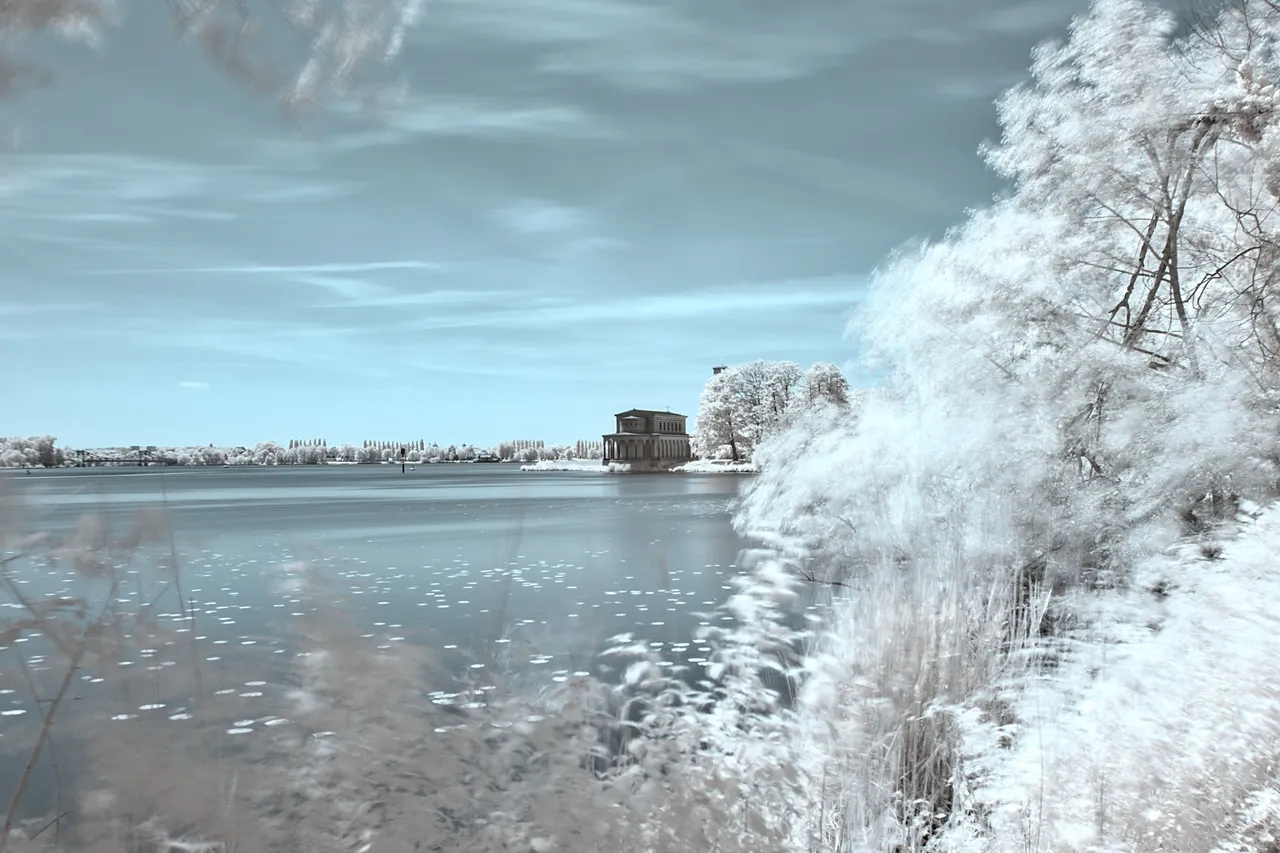
📷 Nikon D750 - Nikkor 17-35/2,8 - f5,6 - ISO 200 - 30 seconds - 720 nm IR pass filter
I continued walking along the Havel. There is a ferry a few hundred metres from the church. I wanted to use it to cross to the other bank of the Havel. On the one hand, I wanted to photograph the church with a view over the Havel and then continue to the historic Glienicke Bridge. Unfortunately, the ferry didn't run yesterday. The ferry service doesn't start until today. So I was there exactly one day too early. It would have taken 45 minutes to get to the other side by car. I postponed my visit to the other bank.
Ich lief weiter die Havel entlang. Einige hundert Meter von der Kirche entfernt gibt es eine Fähre. Mit dieser wollte ich auf das andere Ufer der Havel übersetzen. Ich wollte einerseits die Kirche mit Blick über die Havel fotografieren und dann weiter zur geschichtsträchtigen Glienicker Brücke. Leider fuhr die Fähre gestern nicht. Der Fährverkehr beginnt erst heute. Ich war also genau einen Tag zu früh dort. Die Fahrt mit dem Auto auf die andere Seite hätte 45 Minuten gedauert. Den Besuch des anderen Ufers habe ich verschoben.
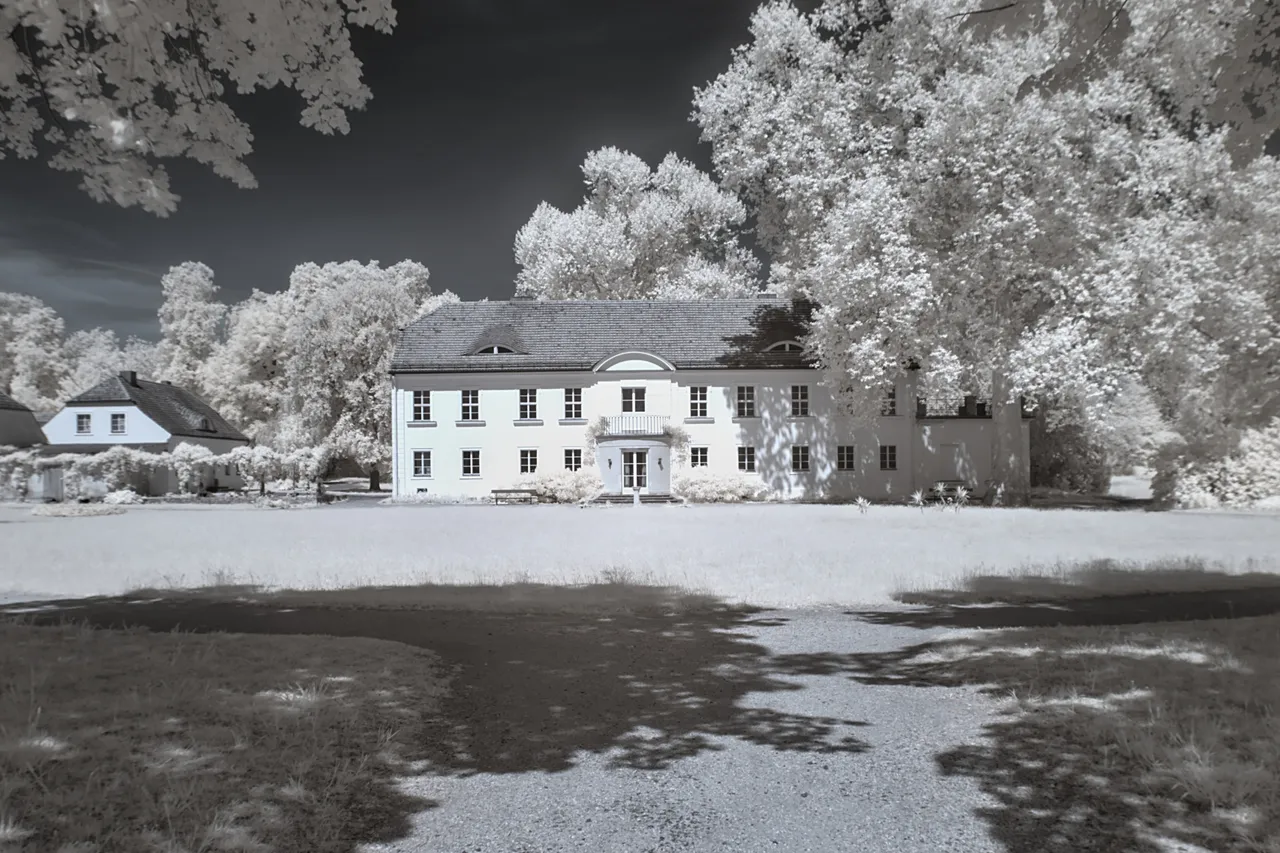
📷 Nikon D300 (full spectrum converted) - Nikkor 17-35/2,8 - f5,6 - ISO 200 - 0,4 seconds - 720 nm IR pass filter
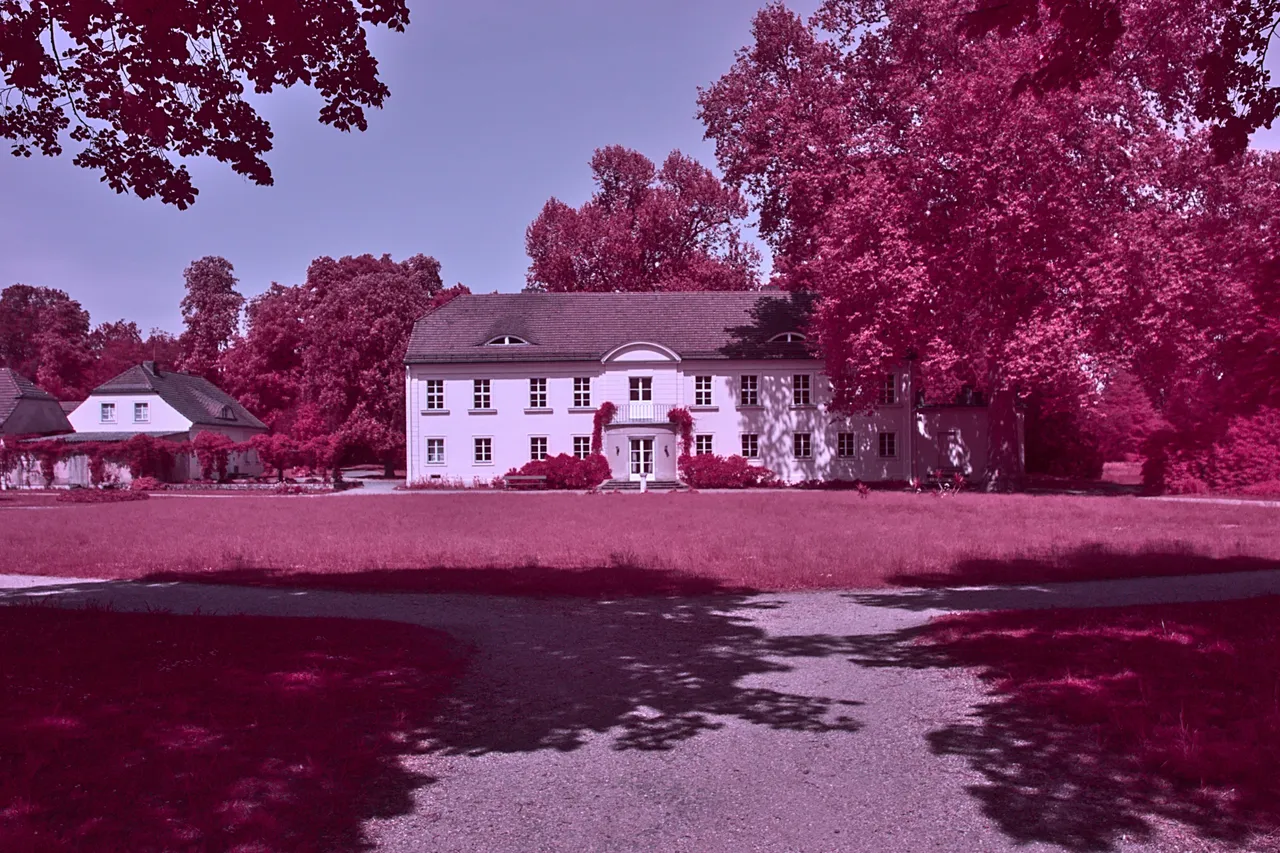
📷 Nikon D300 (full spectrum converted) - Nikkor 17-35/2,8 - f5,6 - ISO 200 - 1/125 second - BG3 UV / IR pass filter
On the way back to the car park, I chose the path by the castle. As already indicated above, I was a little disappointed by the building.
In the first shot I had the 720 nm IR pass filter on the Nikkor lens. As with the previous images, I changed the input profile in Darktable from RGB to Infrared BGR. Alternatively, you can swap the colour channels of red and blue. Most image editing programs do not offer the possibility to change the input profile. I took the second picture of the castle with a BG3 UV/IR pass filter. This filter blocks most of the visible light and allows both ultraviolet and infrared light to pass. I did not change the input profile for this image. The raw image already looked almost like the result shown here.
I had taken further images with other filters (680nm, 650nm, 580nm). For various reasons, these all failed. Unfortunately, I only noticed this at home on the computer. Besides the ferry not sailing, this was the second disappointment of the day. All in all, it was still a successful excursion, if only because of the walk along the Havel.
Auf dem Rückweg zum Parkplatz habe ich den Weg am Schloss gewählt. Wie bereits oben angedeutet war ich etwas entäuscht von dem Gebäude.
In der ersten Aufnahme hatte ich das 720 nm IR pass Filter am Nikkor Objektiv. Wie bei den vorherigen Bildern auch, habe ich in Bildbearbeitung das Eingabeprofil in Darktable von RGB auf Infrarot BGR gestellt. Alternativ kann man auch die Farbkanäle von Rot und Blau tauschen. Die meisten Bildbearbeitungsprogramme bieten nicht die Möglichkeit das Eingabeprofil zu ändern. Das zweite Bild vom Schloss habe ich mit einem BG3 UV/IR pass Filter aufgenommen. Dieses Filter blockiert den größten Teil des sichtbaren Lichts und lässt sowohl ultrviolettes als auch infrarotes Licht passieren. Bei diesem Bild habe ich das Eingabeprofil nicht geändert. Das Rohbild sah schon fast so aus wie das hier gezeigte Ergebnis.
Ich hatte weitere Aufnahmen mit anderen Filtern (680nm, 650nm, 580nm) gemacht. Aus verschiedenen Gründen sind diese alle misslungen. Leider bemerkte ich das erst zu Hause am Computer. Neben der Fähre, die nicht fuhr, war das die zweite Entäuschung des Tages. Insgesamt war es trotzdem ein gelungener Ausflug, allein schon wegen des Spaziergangs an der Havel.

About me
